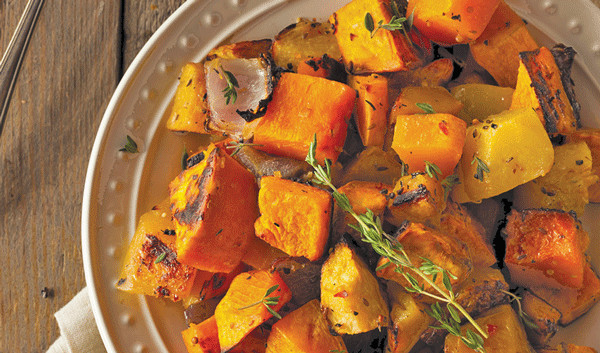Heartburn, that uncomfortable burning sensation in your chest, can often be traced back to the foods you eat. While occasional heartburn is common, chronic heartburn, often a symptom of gastroesophageal reflux disease (GERD), requires a closer look at your diet to identify and manage trigger foods. Understanding What Food Causes Heartburn is the first step towards relief and a more enjoyable eating experience.
 Foods that commonly trigger heartburn symptoms, including spicy foods, citrus fruits, tomato-based sauces, fatty and fried foods, chocolate, coffee, onions, peppermint, carbonated beverages, and alcoholic drinks.
Foods that commonly trigger heartburn symptoms, including spicy foods, citrus fruits, tomato-based sauces, fatty and fried foods, chocolate, coffee, onions, peppermint, carbonated beverages, and alcoholic drinks.
Pinpointing the exact foods that trigger your heartburn can be a personal journey. While certain foods are widely recognized as common culprits, individual sensitivities can vary. Keeping a food journal to track your meals and any subsequent heartburn symptoms is an effective way to identify your specific trigger foods. This proactive approach allows for a more tailored and effective dietary management strategy to combat heartburn.
Common Heartburn Trigger Foods
Certain food categories and ingredients are notorious for intensifying heartburn symptoms. Spicy foods, for instance, are a well-known trigger due to compounds like capsaicin that can irritate the esophagus. Citrus fruits and tomato sauces, being acidic, can also exacerbate heartburn by increasing stomach acid levels. Vinegar, another acidic ingredient commonly found in dressings and marinades, can have a similar effect.
Fatty and fried foods pose another significant challenge for heartburn sufferers. These foods take longer to digest and remain in the stomach for extended periods. This delayed gastric emptying increases the likelihood of stomach acid refluxing back up into the esophagus, leading to heartburn.
Beyond these categories, other frequently cited heartburn triggers include chocolate, caffeine (found in coffee, tea, and some sodas), onions, peppermint, carbonated drinks, and alcohol. Chocolate contains compounds that can relax the lower esophageal sphincter, the muscle that prevents stomach acid from flowing back into the esophagus. Caffeine and alcohol can also have a similar relaxing effect on this sphincter, while carbonated drinks can increase stomach pressure, potentially forcing acid upwards. Onions and peppermint, although generally healthy, can trigger heartburn in some individuals due to their specific compounds.
Heartburn-Friendly Meal Planning
Even with dietary restrictions, a flavorful and satisfying diet is still achievable. Lean meats, fish, poultry, vegetables, legumes, fruits, and whole grains can all be part of a heartburn-friendly meal plan. The key lies in preparation and seasoning methods. If spices are a concern, start with minimal amounts and avoid potent blends containing cayenne or chili powder. Fresh herbs offer a gentler alternative for flavoring dishes. Parsley, oregano, and basil are excellent choices that provide flavor without the intense heat of spices.
Roasting is a cooking technique that enhances the natural sweetness of vegetables. As vegetables roast, their natural sugars caramelize, creating rich and satisfying flavors. Carrots, sweet potatoes, cauliflower, broccoli, squash, and Brussels sprouts are particularly well-suited for roasting. Broiling, sautéing, and grilling are other cooking methods that intensify flavors without relying on excessive fats or spices.
Consuming vegetables raw can also be a good strategy. While tomato sauce might trigger heartburn due to its acidity and cooked form, a fresh tomato, in moderation, may be better tolerated.
Sauces can add moisture and flavor to meals, but it’s crucial to opt for low-fat options. Yogurt-based sauces, such as a blend of low-fat yogurt with cucumber and basil, are refreshing and gentle on the stomach. Sautéing mushrooms in a small amount of olive oil creates a flavorful base for sauces or side dishes. Pesto, made with basil, pine nuts, Parmesan cheese, and a touch of olive oil or water, can be used sparingly as a flavor enhancer. A tablespoon of pesto can add a burst of flavor without being overwhelming.
Breakfast and Lunch Options for Heartburn Sufferers
Starting the day with a heartburn-friendly breakfast sets a positive tone for the rest of the day. Avoid fatty meats like ham or bacon, which can trigger heartburn. Oatmeal is an excellent breakfast choice, offering fiber and gentle digestion. Adding bananas, raisins, or a hint of cinnamon can enhance its flavor naturally. Other breakfast options include low-fat yogurt with fruit or nuts, eggs prepared in a low-fat manner (such as poached or scrambled without excessive butter), whole-grain toast, or chilled whole grains like quinoa mixed with fruit or topped with a dollop of yogurt.
For lunch, salads with lean protein sources like chicken or beans are a good option. However, be mindful of salad dressings. Creamy, high-fat dressings and vinaigrettes made with vinegar and citrus should be avoided. Opt for yogurt-based dressings or simple olive oil and lemon juice (in small amounts, if tolerated) as alternatives.
|

